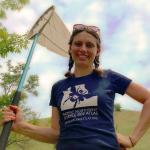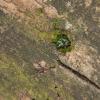The US Environmental Protection Agency (EPA) has announced a preliminary pollinator risk assessment for the neonicotinoid insecticide, imidacloprid, which shows a threat to some pollinators. The EPA’s assessment indicates that the highly toxic, long-lived neonicotinoid imidacloprid “potentially poses risk to hives when the pesticide comes in contact with certain crops that attract pollinators…”
While we are pleased that the EPA released this initial assessment, our review of the documents shows severe shortfalls in the methods and omissions in the evaluation which will allow continued risk to both native pollinators and to honey bees.

Some of the most concerning issues Xerces noted in the preliminary assessment are that:
The EPA used managed honey bees as surrogates for native bees even while it acknowledges that native bees face potentially greater risks. By focusing on impacts to honey bees, the EPA’s assessment ignores the many peer-reviewed studies that show impact to native bees and butterflies from imidacloprid. Pollination by native bees is estimated to be worth over $3 billion a year to the US economy. A final risk assessment must assess risk to a full suite of pollinators.
The EPA failed to address the risks caused when imidacloprid is mixed with other chemicals, even though bees often experience multiple chemical exposures. For example, while the EPA recognizes that fungicides mixed with neonicotinoids can cause greater than additive effects, it still stated that “…the extent of this relationship is beyond the scope of this assessment.” A final risk assessment needs to look at exposure from multiple chemicals.
The EPA disregards the clear risk to bumble bees and other native bees from the use of imidacloprid on tomato production. While harmful residue levels of imidacloprid are expected from tomato production, the EPA determined there was low risk because honey bees are not attracted to tomatoes. In contrast, bumble bees and other non-Apis pollinators are regular visitors to and essential pollinators of tomatoes, greatly improving fruit yield. The EPA’s justification fails to acknowledge the importance of non-Apis pollinators to tomato crop systems, potentially putting several species of important crop pollinators at risk. With more than one quarter of North American bumble bees at risk of extinction, the EPA must be more responsive to the risks to native bumble bees in the final risk assessment.
The EPA failed to evaluate potential risks of imidacloprid to declining monarch butterflies. With on-going work from multiple federal agencies to restore monarch habitat, including the EPA’s own effort to determine mitigation measures to reduce pesticide impacts on monarchs, the decision to exclude monarchs from this pollinator risk assessment is a lost opportunity. The final risk assessment should evaluate the potential risk to monarchs from imidacloprid use.
Even with these limitations, the EPA’s preliminary assessment recognizes significant risks from the legal use of imidacloprid. If these risks are to be reversed, the EPA must suspend the use of imidacloprid until we know if and how it can be used without threatening bees and other pollinators.
It must be recognized that this assessment addresses the impacts of only one neonicotinoid on one group of beneficial insects. Preliminary pollinator risk assessments for three other neonicotinoids, clothianidin, thiamethoxam, and dinotefuran, are scheduled to be released for public comment in December 2016. At that same time, the EPA plans to release a risk assessment on the effects of imidacloprid to birds, aquatic species, and other animals. Despite the fact that neonicotinoids are now widely found in both terrestrial and aquatic habitats, the EPA’s piecemeal process does not include an overarching review of the broader interactions and ecosystem effects from the use of these products.
The Xerces Society hopes that the final pollinator risk assessment for imidacloprid will address the deficiencies noted above and that these issues will be adequately addressed in the pollinator risk assessments for the other three pesticides.






